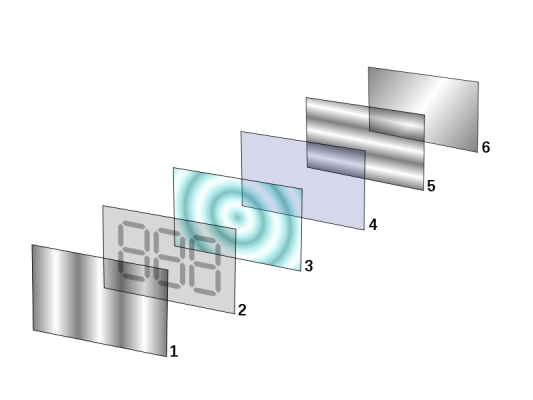Uncategorized
How LCD Technology Works
Liquid crystal display (LCD) is a a type of image-rendering device or visual display (including touchscreens) that uses a thin layer of liquid crystals sandwiched between two substrates. LCDs are unique in the sense that they don’t directly emit light. Instead, a backlight or similar light source illuminates the liquid crystals to create color or monochromatic images.
As you can see from the image to the right, LCDs feature multiple layers, with the actual liquid crystals resting in the center. On each side of the liquid crystals are transparent electrodes and polarizing filters. The polarizing filters work to polarize light produced by the backlight, whereas the electrodes determine the shapes within the image when the LCD device is turned on.
While LCDs are relatively new, liquid crystals have been around for over a century. Austrian botanist and researcher Friedrich Reinitzer was experimenting with cholesteryl benzoate in 1888 when he noticed that heating it caused some rather unusual properties to manifest. The cholesterol-like compound first turned to a milky/cloudy consistency, and as the temperature warmed, it became clear once again. And when it cooled, cholesteryl benzoate turned blue and crystallized.
One key advantage of LCD over plasma displays is that it doesn’t suffer from screen burn-in – a phenomenon characterized by the permanent discoloration of one or more areas on a display. CRT computer monitors and plasma displays are particularly susceptible to screen burn-in since they contain phosphorus. Prolonged use of other non-uniform use will cause the the phosphor compounds to lose their luminance, resulting in discoloration and loss of image of image quality. Thankfully, LCDs don’t suffer from screen burn-in since they don’t contain phosphor compounds.
Another advantage of LCD technology is its low energy use. According to the official EnergyStar.gov website, LCD monitors and displays are 50-66% more energy efficient than their CRT counterpart. This translates into substantial savings for consumers who choose LCD TVs, monitors and other devices with LCD electronic displays.
Some of the applications in which LCDs are used includes the following:
- Computer monitors
- Smartphone monitors
- Televisions
- Video game consoles
- Instrument panels
- Aircraft gauges and displays
- Promotional signs for retail stores
- Touchscreen devices
Hopefully, this will give you a better understanding of liquid crystal display technology and how it’s used in modern-day applications.

